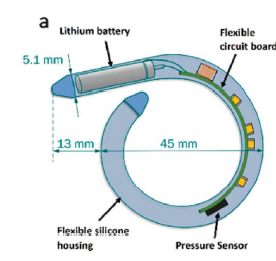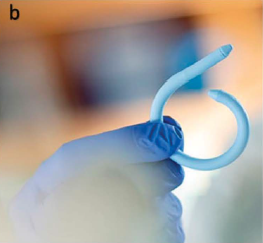Advanced Platform Technology Center
Wireless Implantable Bladder Pressure Monitor for Continence and Urinary Health

Urodynamics is the standard method of diagnosing bladder dysfunction, but involves catheters and retrograde bladder filling. With these artificial conditions, urodynamics cannot always reproduce patient complaints. Investigators with the APT Center have developed a wireless, catheter-free intravesical pressure sensor, which enables catheter-free telemetric ambulatory bladder monitoring (see Figure). The wireless pressure monitor is inserted into the bladder transurethrally and without pain, distress or trauma and transmits bladder pressure to an antenna and radio placed outside the body. This device has been tested in humans and the technology has been licensed for commercial development.

This new tool enables physicians and researchers to obtain data related to bladder pressures without the inconvenience and infection risk of chronically indwelling catheters, or need for repeated catheterizations. Longer monitoring times in a patient’s home, made possible by this wireless catheter-free monitoring system, have the potential to revolutionize our understanding of lower urinary tract function and could provide a more accurate, less distressing method of diagnosing lower urinary tract dysfunction. In the future, this system could enable conditional electrical stimulation to reduce unwanted bladder activity, an improvement over the continuous open-loop stimulation methods currently available.
Principal Investigators: Margot Damaser, Ph.D. and Steve Majerus, PhD
Funding Agency: Veterans' Affairs Rehabilitation Research and Development, NIH, State of Ohio
Photo: A. Schematic diagram of the wireless bladder pressure monitor with key components identified. B. Photo of the insertable wireless catheter-free bladder pressure monitor.




















